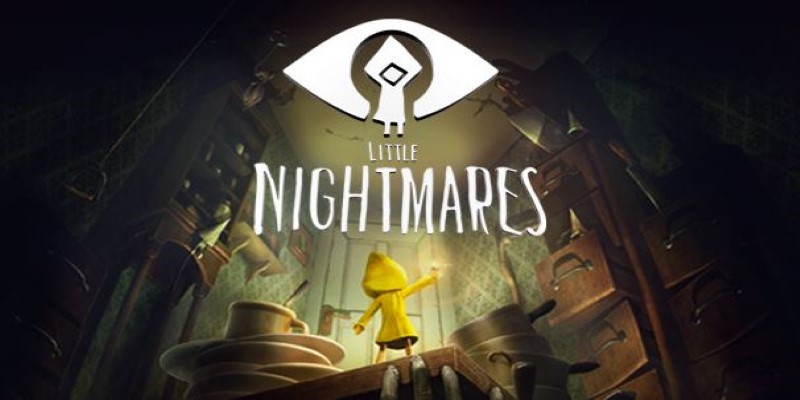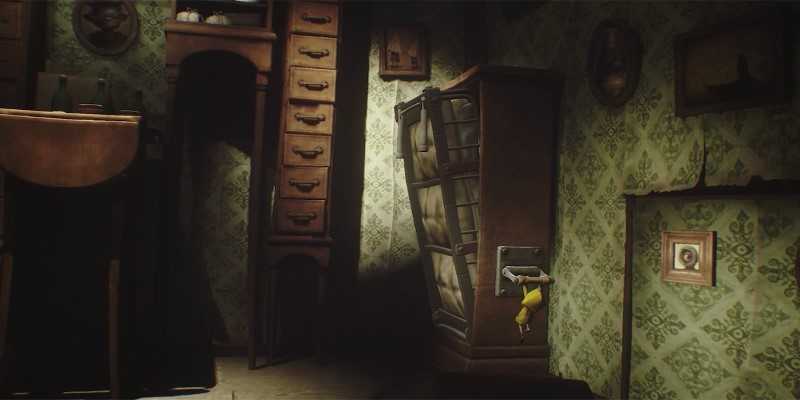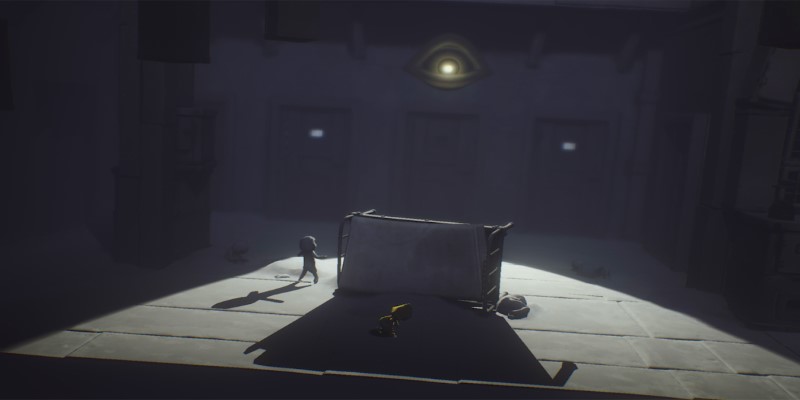
Geometry Dash

Fluvsise - A Fluff to Luv

Snake.io - Fun Snake .io Games

Pokémon Unite

Agent Hunt - Hitman Shooter

Gabbys Dollhouse: Games and Cats

Car Race 3D: Car Racing

Super Meat Boy Forever

Dark War Survival

Stumble Guys

Little Nightmares
ScreenShots




Editor Reviews
This game is not for weakhearted freaks. In it, you find yourself dropped into a cold, dark environment. You're tiny, wearing a yellow raincoat, and everything is too big around you. That's how Little Nightmares starts. This is not a game that holds your hand or leads you by the nose. It just leaves you there and lets you do your thing. The environment is alive but not friendly. Shadows move rapidly and catch your attention. Every corner seems to have something to hide. And nine times out of ten, it does.

The game is a puzzle platformer, but "just" does it a disservice. It goes deep into horror—not the scare-you-with-a-jump variety, but the variety that gets in your head and festers. You're not battling monsters. You're fleeing from them, staying behind tables, holding your breath as they wriggle their nostrils and sniff the air. It's cleverly designed and tight. Rooms are like being in some actual place, distorted and unnatural but still linked. Mechanisms are straightforward: run, jump, grab, hide. But how they are employed is everything.
Nothing is explained outright. There are no big text boxes or tutorials. You learn by doing and by failing. A lot. It can feel frustrating, but that's part of it. You're small, and the world is not kind. The game is brief, but it leaves a lasting impression.

You play as Six, a small, barefoot child trying to escape a place called the Maw. The Maw is this underwater structure filled with grotesque beings who want to eat you, capture you, or worse. They're slow but terrifying, and every chase is filled with tension. The world is rich in detail—filthy kitchens, long hallways, creaking floorboards. Everything looks handmade, like a child's drawing of a nightmare brought to life.
The sound design helps build the mood. You'll hear creaks, distant groans, and soft thuds. The soundtrack is quiet but effective, only rising when something awful is near. There's no dialogue, no voices, just breathing, footsteps, and silence. The silence does most of the talking.
What sets it apart is its commitment to its look and feel. The camera work, lighting, and scale make every space feel enormous and menacing, even when performing a simple task like dragging a crate. The world never breaks character. It's grotesque, yes, but crafted with intent. There's beauty in the unsettling nature of it.
And even though the game doesn’t explain anything, it respects your curiosity. You notice things. A flickering TV in a dark hallway, a tiny shoe pile that says more than any dialogue could. These little touches build connection, even if nothing is ever spelled out. That quiet storytelling, paired with strong art and sound, makes Little Nightmares linger long after it’s over.
How to Play?
Step 1: Launch the game and wait through the opening scene. You'll start as a small, hooded figure named Six in a dark, eerie room. Use your controller or keyboard to move around and get a feel for the controls: the left stick or arrow keys to walk, the trigger or shift key to sprint, and a button to jump.

Step 2: Start exploring. Walk to the right side of the room. You'll encounter obstacles such as furniture or boxes. Climb over them by jumping and grabbing onto them. Use the grab button to pull open doors or move objects. Most puzzles involve simple physics—dragging something into place, turning levers, or lighting dark areas with your lighter.
Step 3: Avoid confrontation. The game isn't about fighting. You're small and fragile, so stealth is your tool. Hide under furniture, stay in shadows, and time your movements. Watch enemies' patterns. If you're seen, run fast and hide until they lose interest.
Step 4: Save your progress by lighting lanterns or candles scattered throughout the area. These act as checkpoints. If you die, you'll start from the last one you lit. So don't rush—observe each room.

Step 5: Solve each area's puzzle before proceeding. Sometimes, it's a matter of dragging a suitcase to reach a handle. Other times, you'll need to distract an enemy with a sound. Don't overthink—experiment until it clicks.
Step 6: Keep going until you reach the end of each chapter. You’ll learn as you go, but remember: slow, smart, and silent wins in Little Nightmares.
Download for App
Ratings
Disclaimer
2 . Gamekudo provide screenshots, historical version Apk, links and other information, which we collected fromGoogle Play. we will also add our own reviews to providechoose
3 . All trademarks,registered trademarks, product names and company names or logos appearing on the siteare the property of their respective owners.
4 . Gamekudo abides by the federal Digital Millennium copyright Act (DMCA) by responding to notices of alleged infringement that complies with the DMcA and other applicable laws.
5 . We guarantee the security of apk files downloaded from our site and also provide the official download linkat Google Play Store and App Store.
6 . lf you are the owner or copyright representative and want to delete your information, please contact [email protected]
7 . All the information on this website is strictly observed all the terms and conditions of Google Ads Advertisingpolicies and Google Unwanted Software policy.





















